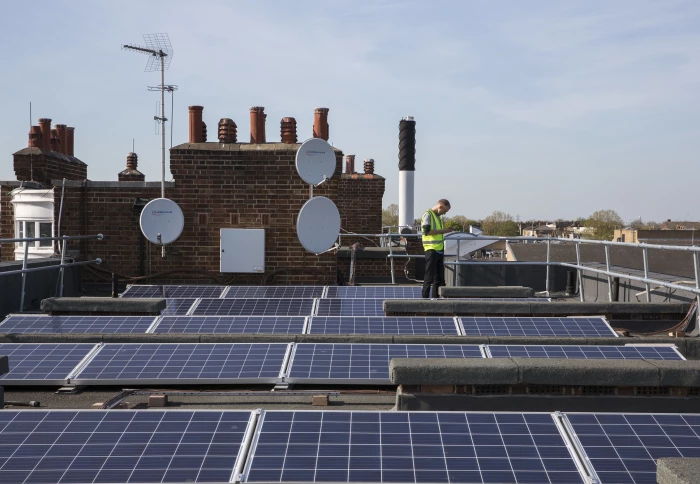Updated climate commitments fall far short, but net-zero pledges provide hope


Analysis of countries’ plans to fight climate change show they are not enough to avoid the worst impacts unless further promises are kept.
New and updated climate commitments fall far short of what is needed to meet the goals of the Paris Agreement of keeping temperature rises well below 2°C above the average temperature before the industrial revolution and ideally below 1.5°C.
After the promises, we now need plans and policies to deliver on the emissions reductions. Dr Joeri Rogelj
Currently, the commitments leave the world on track for a global temperature rise of at least 2.7°C this century, according to the UN Environment Programme’s (UNEP) latest Emissions Gap Report 2021: The Heat Is On, co-authored by an Imperial researcher.
The report analyses the impacts of countries’ updated Nationally Determined Contributions (NDCs) – non-binding national plans proposing climate actions, such as cutting greenhouse gas emissions, to achieve the targets set out in the Paris Agreement in 2015.
It finds that the latest submitted NDCs – and other commitments made for 2030 but not yet submitted in an updated NDC – only take an additional 7.5 per cent off predicted annual greenhouse gas emissions in 2030, compared to the previous round of commitments. Reductions of 30 per cent are needed to stay on a pathway for 2°C and 55 per cent for 1.5°C.
Defining pivot point
Released ahead of the UN Climate Change Conference (COP26), the latest round of climate talks taking place in Glasgow in November, the report also finds that additional net-zero pledges – promises to balance the amount of greenhouse gases emitted with that removed from the atmosphere – could make a big difference.
If fully implemented, these pledges could bring the predicted global temperature rise down to 2.2°C, providing hope that further action could still head off the most catastrophic impacts of climate change. However, net-zero pledges are still vague, incomplete in many cases, and inconsistent with most 2030 NDCs.
Dr Joeri Rogelj, Director of Research at Imperial’s Grantham Institute – Climate Change and the Environment, has been a Lead Author on the reports for the past decade, and this year led the report’s chapters on net-zero targets and on the global emissions gap).
He said: "For the first time, the most optimistic interpretation of all pledges that are put on the table add up to global best estimate warming just below 2.0°C over the course of this century. That is not yet in line with keeping warming ‘well below’ 2°C or 1.5°C, but encouraging nevertheless. After the promises, we now need plans and policies to deliver on the emissions reductions.
"UNEP has been tracking progress on climate action for the past decade, and shows that discussions at the forthcoming COP26 climate summit can be a defining pivot point in our response to the climate change challenge."
Clock is ticking
A total of 49 countries plus the EU have pledged a net-zero target in addition to their NDCs. This covers over half of global domestic greenhouse gas emissions and a third of the global population. Eleven targets are enshrined in law, covering 12 per cent of global emissions.
Current NDCs are predicted to lead to a 2.7°C temperature rise. However, if made robust and implemented fully, net-zero targets could shave an extra 0.5°C off global warming, bringing the predicted temperature rise down to 2.2°C. However, many of the national climate plans delay action until after 2030, raising doubts over whether net-zero pledges can be delivered.
Inger Andersen, Executive Director of UNEP, said: “To stand a chance of limiting global warming to 1.5°C, we have eight years to almost halve greenhouse gas emissions: eight years to make the plans, put in place the policies, implement them and ultimately deliver the cuts. The clock is ticking loudly.”
-
Based on a press release by UNEP.
Article text (excluding photos or graphics) © Imperial College London.
Photos and graphics subject to third party copyright used with permission or © Imperial College London.